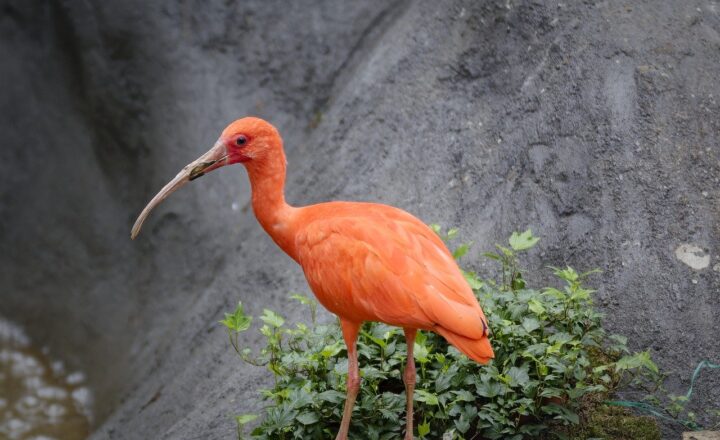The Role of Zoos in Protecting Endangered Species Through Captive Breeding
November 15, 2024

Zoos have evolved significantly over the last few decades, and many now prioritize conservation and education over mere entertainment. One of the most critical functions that modern zoos serve is the protection of endangered species through captive breeding programs. These initiatives aim to enhance populations of animals threatened by habitat loss, poaching, and climate change, ultimately assisting in the preservation of biodiversity and the health of ecosystems.
1. Understanding Endangered Species
To appreciate the role zoos play in conservation, it’s essential to understand what it means for a species to be endangered. Endangered species are those that face extinction in the near future, either in the wild or in captivity. The International Union for Conservation of Nature (IUCN) categorizes species based on a range of factors, including population size, reproductive patterns, and distribution. Common causes for endangerment include habitat destruction, illegal hunting, pollution, and climate change.
As per recent statistics, over 41% of amphibian species, 26% of mammals, and 13% of bird species are currently threatened. Without intervention, many of these species could vanish forever.
2. The Importance of Captive Breeding Programs
Captive breeding programs refer to the practice of breeding endangered species in controlled environments, such as zoos and wildlife reserves. The main goals of these programs include:
- Increasing Population Numbers: By breeding endangered species in captivity, zoos can bolster their populations, helping to prevent extinction.
- Genetic Diversity: Captive breeding allows zoos to manage genetic diversity among small populations, reducing the risks of inbreeding and increasing resilience against diseases.
- Reintroduction to the Wild: Successful breeding programs often result in animals that can eventually be reintroduced into their natural habitats, helping to restore populations in the wild.
- Public Awareness and Education: By showcasing these efforts, zoos raise awareness about conservation issues and foster a connection between the public and endangered species.
Captive breeding can be a powerful tool in preventing the decline of vulnerable species, but it must be part of a broader conservation strategy that includes habitat conservation, anti-poaching initiatives, and community engagement.
3. Success Stories in Captive Breeding
Many zoos around the world have seen remarkable successes with their captive breeding programs. Here are a few notable examples:
- California Condor: Once considered extinct in the wild, the California Condor population has been significantly increased through captive breeding in California and Arizona. As a result, over 500 condors now exist, with more than half of them living in the wild.
- Arabian Oryx: Once extinct in the wild, this species was successfully bred in captivity. The Arabian Oryx has been reintroduced into its natural range in Oman and UAE, showcasing the potential of captive breeding to restore species.
- Przewalski’s Horse: This is the only wild horse species left in the world. Zoos have bred Przewalski’s horses in captivity, and more than 2,000 now roam the plains of Mongolia, where they were once driven to extinction in the wild.
These cases exemplify how captive breeding can lead to the revival of species that were on the brink of extinction.
4. Challenges Faced by Captive Breeding Programs
Despite their successes, captive breeding programs are not without challenges. Some common issues include:
- Limited Space and Resources: Many zoos operate within constraints regarding space and funding, which can limit the scope of breeding programs.
- Reintroduction Challenges: Animals bred in captivity often face difficulties adapting to the wild due to a lack of instinctive behaviors usually learned from their parents.
- Genetic Bottlenecks: In some cases, small captive populations can lead to limited genetic diversity, posing future challenges in maintaining healthy populations.
To address these challenges, many zoos collaborate with conservation organizations and other institutions worldwide. These partnerships lead to more extensive genetic management, better reintroduction strategies, and enhanced funding opportunities.
5. The Future of Zoos and Conservation
As society continues to recognize the ethical responsibilities involved in animal welfare and conservation, zoos are transitioning towards becoming more effective conservation hubs. The future of zoos hinges on:
- Enhanced Partnerships: Collaboration with governments, non-profits, and local communities is vital to ensure that breeding programs support the surrounding ecosystems and address the issues that threaten wildlife.”
- Educational Efforts: Continued focus on education and outreach will encourage public support for conservation efforts and promote active participation in wildlife preservation.
- Increased Research and Technology: Advances in biotechnology such as genetic management and reproductive technologies are paving new ways to enhance captive breeding outcomes.
The ultimate goal is creating sustainable populations for at-risk species, ensuring they survive not just in captivity, but thrive in their natural habitats.
Conclusion
Zoos are no longer mere collections of animals for public display; they are critical players in global conservation efforts. Through captive breeding, they provide a lifeline for endangered species while fostering connections between the public and the natural world. As zoos continue to evolve and adapt to the growing crisis of species extinction, their role in protecting our planet’s biodiversity will become more vital than ever. By supporting these efforts, each of us can contribute to a brighter future for endangered wildlife, promoting coexistence between humans and nature.
With collaboration, education, and innovative practices, zoos will undoubtedly enhance their impact on the survival of numerous species, ensuring future generations can enjoy the beauty of our planet’s diverse wildlife.








